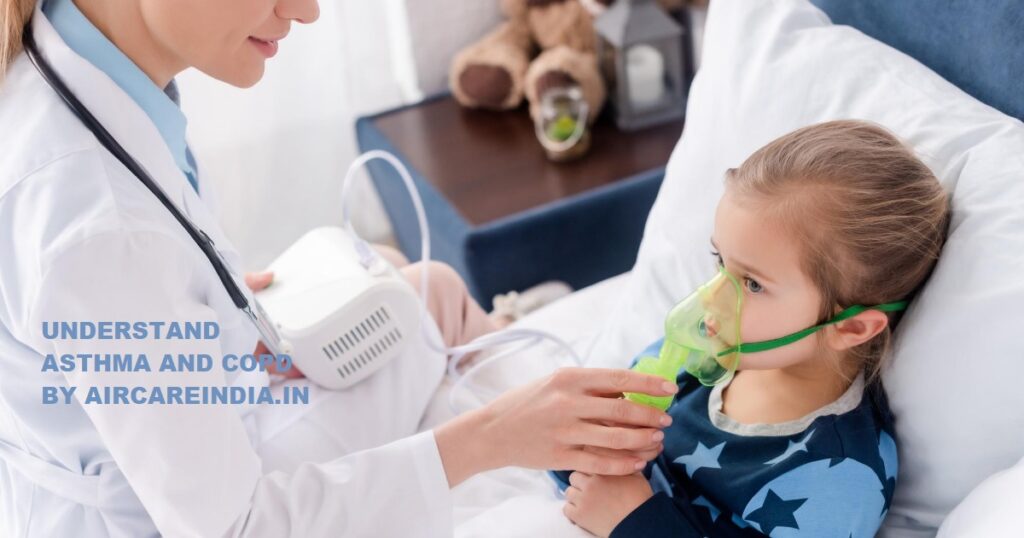Table Of Contents
Living in a bustling urban environment like those in India comes with its own set of challenges, and respiratory health is a major concern. Two prevalent conditions that can cause difficulty breathing are asthma and COPD. While both share some similarities, understanding their distinct characteristics is crucial for proper diagnosis and management. This blog delves into the world of asthma and COPD, exploring their definitions, symptoms, treatment approaches, and highlighting the concerning statistics of their severity in urban India.

What is Asthma?
Asthma is a chronic inflammatory lung disease characterized by narrowed and inflamed airways. These changes trigger episodes of wheezing, coughing, chest tightness, and shortness of breath. Common triggers for asthma attacks include:
• Allergens: Pollen, dust mites, pet dander, mold spores
• Irritants: Smoke, air pollution
• Exercise
• Cold air
• Stress
• Respiratory infections
Asthma symptoms often come and go, and may worsen at night or during exercise. It’s estimated that over 25 million people in India suffer from asthma, with a higher prevalence observed in urban areas due to increased exposure to air pollution.
What is COPD?
Chronic obstructive pulmonary disease (COPD) is a progressive lung disease that primarily affects the airways and alveoli (air sacs) in the lungs. Damage caused by smoking or other long-term exposure to irritants like air pollution leads to airflow obstruction, causing similar symptoms to asthma:
• Wheezing
• Coughing, often with mucus
• Chest tightness
• Shortness of breath
Unlike asthma, COPD symptoms tend to worsen gradually over time and are not easily reversible. In India, COPD is a significant health burden, with over 30 million people estimated to be affected, particularly in urban areas with high pollution levels.
Unveiling the Differences: Asthma vs. COPD Symptoms
While both asthma and COPD lead to breathing difficulties, there are key distinctions in their symptoms:
Symptom Asthma COPD
Onset Often sudden, triggered by specific factors Gradual worsening over time
Cough May be dry or productive (with mucus) Often productive with mucus
Reversibility Symptoms may improve with medication Symptoms may not improve significantly
Seasonal Patterns Symptoms may worsen in specific seasons (allergen triggers) Symptoms typically consistent year-round
Progression Symptoms may come and go Symptoms tend to worsen progressively
Triggers Allergens, irritants, exercise Primarily smoking and air pollution

Taking Control: Treatment Process Differences
Both asthma and COPD require ongoing management, but their treatment approaches differ:
Treatment Asthma COPD
Focus Reduce inflammation and prevent airway narrowing Open airways and relieve symptoms
Medication Inhaled corticosteroids, bronchodilators Bronchodilators, inhaled steroids (in some cases)
Lifestyle Changes Avoiding triggers, managing allergies Smoking cessation, pulmonary rehabilitation
Severity Can range from mild to severe Often progressive
Prevention Early diagnosis and management can help minimize symptoms Primarily focuses on managing symptoms and slowing progression
Conclusion: Breathe Easy with Awareness
While asthma and COPD can cause similar breathing difficulties, understanding their differences is essential for seeking appropriate diagnosis and treatment. Early intervention for both conditions is crucial to manage symptoms and improve quality of life. If you experience persistent breathing problems, consult a doctor for proper evaluation. By raising awareness about asthma and COPD, we can empower individuals in urban India to breathe easier and live healthier lives.




